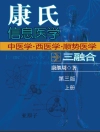Pheochromocytomas are rare but treacherous catecholamine-producing
tumors, which if missed or not properly treated, will almost
invariably prove fatal. Prompt diagnosis is, therefore, essential
for effective treatment, usually by surgical resection. The
manifestations are diverse and the tumor can mimic a variety of
conditions, often resulting in either erroneous diagnoses or a
delayed diagnosis.
Reflecting the recent leaps in understanding this condition,
Pheochromocytoma: Diagnosis, Localization, and Treatment
provides a comprehensive update on the improvements in the
diagnosis, localization, management and treatment of
pheochromocytomas – providing you with the latest cutting
edge science alongside best clinical practice. Written by the
leading names in the field, the text details the significant
developments in understanding the genetics and biology of the
tumors, coupled with technological advances in the fields of
analytical chemistry, genomics, molecular biology and nuclear
medicine.
The most comprehensive book on pheochromocytoma
* * Provides cutting edge science and clinical guidance
* Written by the leading names in the field
* Authors present their recently developed novel biochemical test
for the diagnosis of Pheochromocytoma
Tabela de Conteúdo
1 Introduction.
2 Historical comments.
3 Pathology.
4 Clinical presentation of pheochromocytoma.
4.1 Signs and Symptoms.
4.2 Differential Diagnosis.
4.3 Special Presentations.
4.3.1 Diagnosis of Pheochromocytoma in Patients with an
Incidentally Discovered Adrenal Mass.
4.3.2 Pheochromocytoma as an Endocrine Emergency.
4.3.2.1 Hypertensive Crisis.
4.3.2.2 Hypotension and Shock.
4.3.2.3 Multisystem Failure.
4.3.2.4 Cardiac Emergencies.
4.3.2.5 Acute Peripheral Ischemia.
4.3.2.6 Pulmonary Emergencies.
4.3.2.7 Gastrointestinal Emergencies.
4.3.2.8 Nephrological Emergencies.
4.3.2.9 Neurological Emergencies.
4.3.3 Malignant Pheochromocytoma.
4.3.4 Pheochromocytoma in Children.
4.3.5 Pheochromocytoma in Pregnancy.
4.3.6 Pseudopheochromocytoma.
4.3.7 Factitious Pheochromocytoma.
5 Current trends in genetics of pheochromocytoma.
5.1 MEN Syndromes.
5.1.1 Diagnostic Approaches.
5.2 VHL Syndrome.
5.3 NF Type 1.
5.4 Succinate Dehydrogenase Gene Related Pheochromocytoma.
5.5 Genetic Problems in Sporadic and Other
Pheochromocytomas.
6 Catecholamines and adrenergic receptors.
6.1 Synthesis and Sources of Catecholamines.
6.2 Synthesis of Catecholamines in Pheochromocytoma.
6.3 Storage and Release of Catecholamines by the Sympathoadrenal
System.
6.4 Uptake and Metabolism of Catecholamines Produced by the
Sympathoadrenal System.
6.5 Catecholamine Metabolism in Hepatomesenteric Organs.
6.6 Catecholamines Metabolism and Release by
Pheochromocytoma.
6.7 Kinetics and Elimination of Catecholamines and Their
Metabolites.
6.8 Pharmacology of Catecholamine Systems: Implications for
Pheochromocytoma.
6.9 Physiology of Catecholamine Systems.
6.9.1 Adrenal Medullary Hormone System.
6.9.2 Peripheral Dopamine Systems.
6.10 Adrenergic Receptors and Their Functions.
6.11 Actions of the Catecholamines.
7 Current trends in biochemical diagnosis of
pheochromocytoma.
7.1 Biochemical Tests of Catecholamine Excess.
7.2 Measurement Methods.
7.3 Reference Intervals.
7.4 Initial Biochemical Testing.
7.5 Follow-up Biochemical Testing.
7.6 Collection and Storage of Plasma and Urine Specimens.
7.7 Interferences from Diet and Drugs.
7.8 Pharmacologic Tests.
7.9 Additional Interpretative Considerations.
7.10 Summary.
8 Current trends in localization of pheochromocytoma.
8.1 Anatomical Imaging of Pheochromocytoma.
8.1.1 Computed Tomography.
8.1.2 Magnetic Resonance Imaging.
8.2 Functional Imaging of Pheochromocytoma.
8.2.1 MIBG Scintigraphy.
8.2.2 Positron Emission Tomography.
8.2.3 Somatostatin Receptor Scintigraphy (Octreoscan).
8.2.4 Current Imaging Algorithm.
9 Treatment of pheochromocytoma.
9.1 Medical Therapy and Preparation for Surgery.
9.2 Postoperative Management.
10 Future trends and perspectives.
10.1 Genomics in Pheochromocytoma Research.
10.2 Proteomics in Pheochromocytoma Research.
10.3 Future Therapeutic Modalities for Pheochromocytoma.
References.
Index
Sobre o autor
Professor Karel Pacak put together the Pheochromocytoma
Research Program at the NIH, one of the most prestigious and
largest programs world-wide; published over 80 articles/book
chapters on this topic. Introduced new biochemical and imaging
approaches to this tumor, especially the use of 18F-fluorodopamine
in localization of pheochromocytoma. He also developed new
biochemical and imaging algorithms for pheochromocytoma for
practicing physicians. Moreover, developed new animal model of
metastatic pheochromocytoma. Currently working as the Chief of
Section on Medical Neuroendocrinology, NICHD. He is also Professor
of Medicine at Georgetown University, Washington DC and Charles
University, Prague, Czech Republic.
Dr. Eisenhofer is a clinical biochemist with broad
experience in basic and patient-oriented research on neuroedocrine
and autonomic nervous system function in health and disease.
Relevant achievements include codevelopment with Dr. Jacques
Lenders of the first HPLC method for measurements of plasma free
metanephrines, a test now used for improved biochemical diagnosis
of pheochromocytoma. Dr. Eisenhofer was also responsible for
initial development of 18F-fluorodopamine as a positron emission
tomographic imaging agent for visualizing sympathetic nerves and
neuroendocrine tumors. Dr. Eisenhofer co-chairs the
Pheochromocytoma RESsearch Support ORganization (PRESSOR –
http://www.pressor.org).
Professor Jacques Lenders did his medical study at the
University of Nijmegen, the Netherlands. In 1982 he finished his
training for internist and in 1988 he defended his thesis on
‘Blood pressure and catecholamines in essential
hypertension’. From august 1991 till january 1993 he was
‘visiting associate’ at the ‘Clinical
Neuroscience Branch’ of the ‘National Institute of
Neurological Disorders and Stroke’ (National Institutes of
Health’, Bethesda, USA). In 2005 he was appointed as
professor of Vascular Medicine at the University Medical Center in
Nijmegen, The Netherlands. He is deputy-chairman of the Department
of General Internal Medicine.












